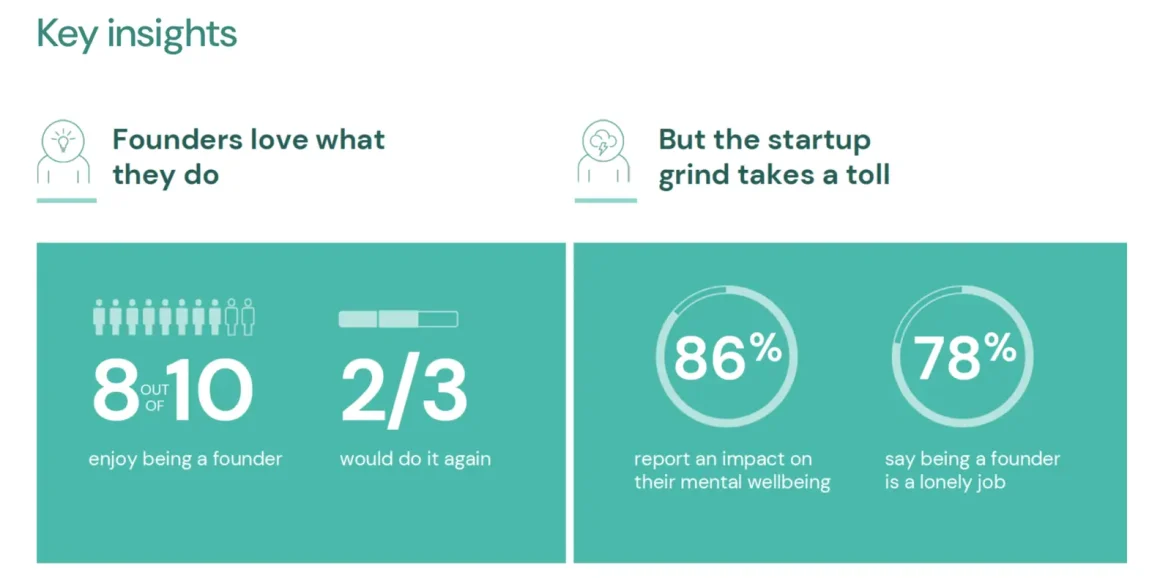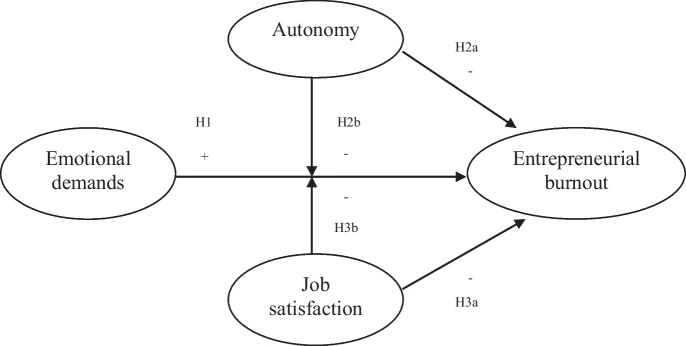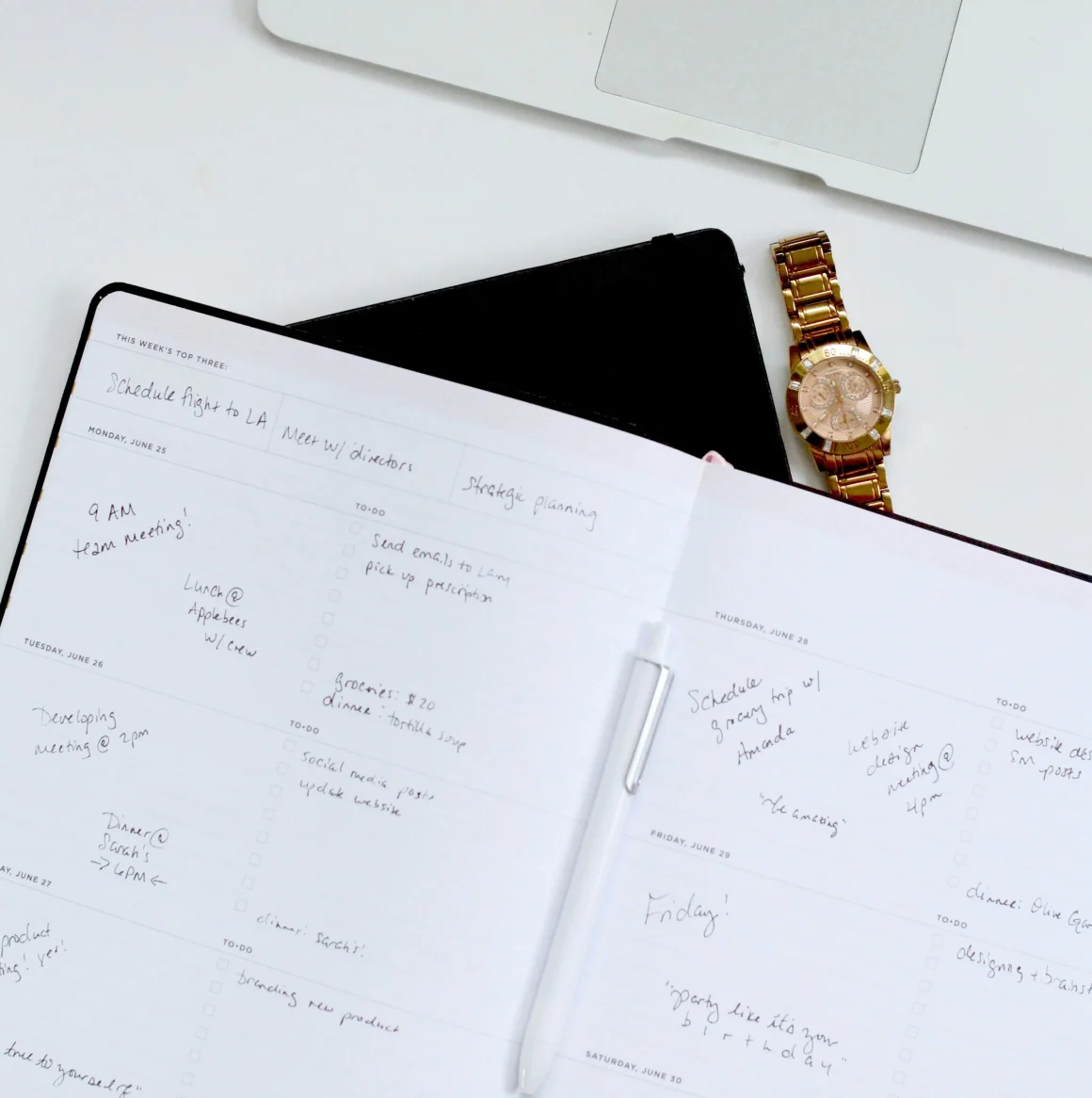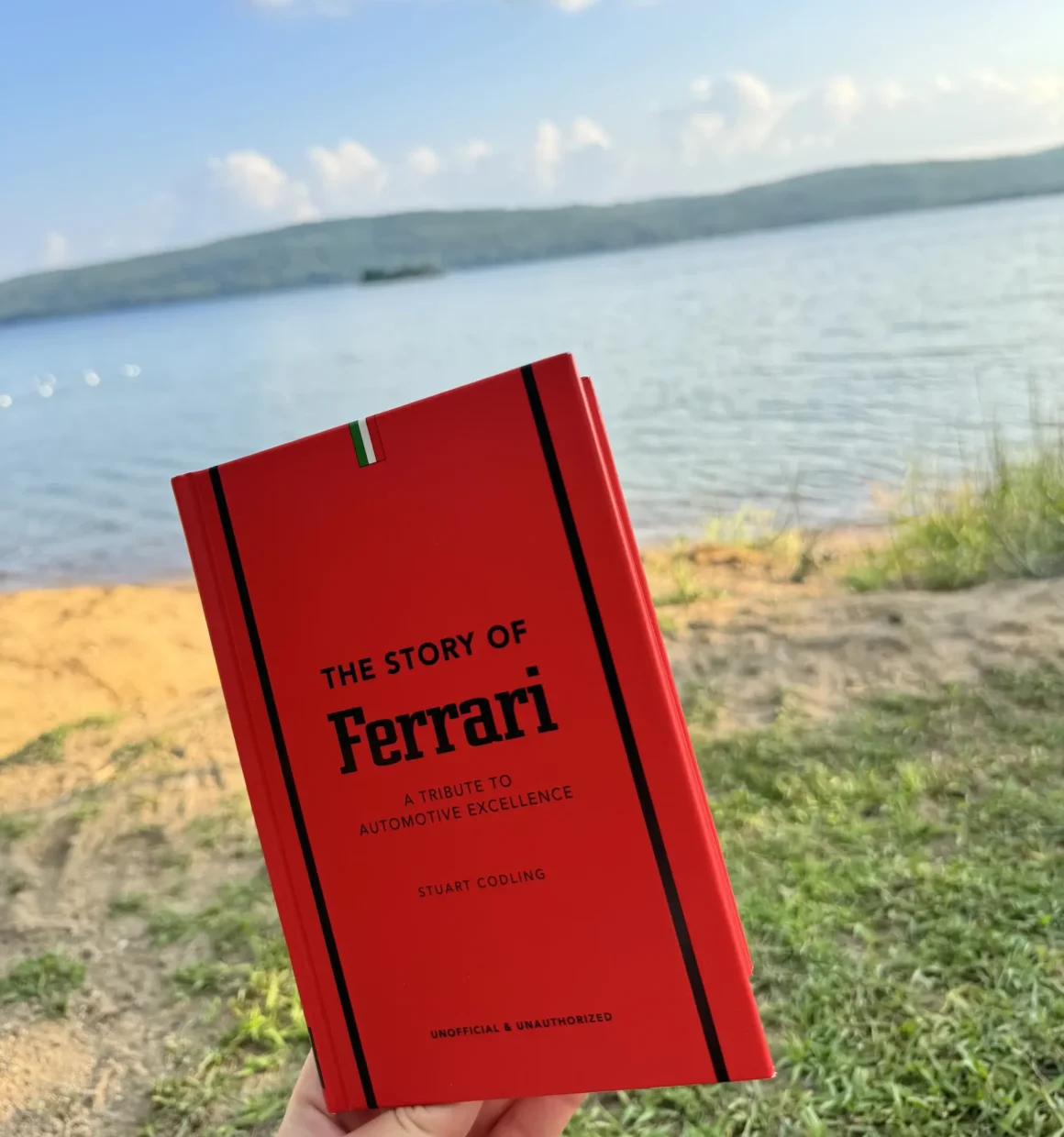Written by Lidia Vijga, co-founder at DeckLinks
A small, personal note before the how to: I started companies because I loved solving a problem. But somewhere along the way I learned that purpose can vanish quietly, like a light dimming, and the work turns grey. What follows is my attempt to map the switch back on, with examples you can steal.
Why I’m Writing This
I’ve hit burnout three times.
Every single time, the spreadsheets, our KPIs, and my carefully color-coded boards said I was “crushing it.”
My body disagreed.
One morning in 2021, I opened my laptop to check DeckLinks metrics. Click-throughs looked strong. Trial sign-ups were up. Revenue had nudged forward. I should have felt proud. Instead my hand hovered over the trackpad like it weighed fifty pounds. I couldn’t bring myself to click. I closed the lid, walked to the kitchen, and stared at the coffee machine like it had betrayed me.
Sound familiar?
If you’re feeling that same heaviness, I’m not here to lecture you on meditation apps, green smoothies, or productivity hacks. You don’t need another hack. You need your why.
Burnout isn’t evidence you’re weak. It’s the mind and body telling you that you’ve drifted away from what made you start.
So let’s talk about realigning with that spark – practically, brutally honestly, founder-to-founder.
What Founder Burnout Really Looks Like
More than half the founders I meet describe the same symptoms: Sunday dread, inbox paralysis, and that “I just need to finish this sprint” lie we tell ourselves.
The data backs up the stories. A recent survey of African founders showed that 86% said building their business hurt their mental health, while 78% say being a founder is a lonely job. You can read the numbers for yourself in the Flourish Ventures report.

Work hours alone don’t explain it. A UK study found that a quarter of founders work 50 – 80 hours a week, yet some of them still feel alive, focused, even playful. Others are dying inside at 35 hours. Hours matter, but meaning matters more.
Medicine tells the same story. Physicians – yes, the people who lecture us on self-care – keep answering email while lying on a beach. In one U.S. study, 70% worked during vacations, and the ones who did felt far more burned out. The paper is open-access, and if you want the clinical details, start with the figures in JAMA Network Open.
Purpose flips the script. Founders who feel “deeply connected” to their mission are far less likely to flame out, according to a recent TIME feature that breaks down how meaning protects our mental wiring.
You get the picture. Burnout isn’t just about load; it’s about losing sight of why the load matters.
Three Myths I Need You to Drop
Let’s go over the biggest myths first, because bad assumptions keep you stuck.
Myth 1: Burnout comes from working too many hours.
I’ve powered through 90-hour weeks that felt lighter than air because they were tied to a problem I loved. I’ve also crawled through 25-hour weeks that felt like digging graves. Time on the clock is a weak predictor. Alignment to purpose is the strong one.
Myth 2: Burnout proves you’re not founder material.
Some of the sharpest operators in my network have hit the wall, taken a breath, and then built category leaders. The crash was a warning light, not a personality verdict.
Myth 3: You just need a vacation.
Sure, a week in Tulum will help you repay sleep debt: better sleep, fewer late nights, clearer headspace. It does nothing for mission debt – the vagueness around purpose, positioning, and next steps that continues to drain energy.

Here we are in Tulum – me and my co-founder – trying to outrun burnout. The same questions came along. A towel on the sand fixed our tired bodies, not our direction.
Hold those myths up to the light and watch them melt. Now we can work on the real problem.
Step Zero: Admit the Drift
I catch myself drifting when I notice four simple signals.
- I scroll Twitter longer than I work on product.
- Customer wins feel like admin tasks instead of little celebrations.
- Sentences in my head start with “I should” instead of “I can’t wait to.”
- I reach for tactics – ads, funnels, automations – before I think about people.
If two or three of those ring true for you, the drift is already underway. Don’t panic, see it for what it is.
Why Losing Your “Why” Hurts So Much
To be clear: purpose isn’t a spiritual hobby – it’s an operational tool. Those who know me know I went to India to pursue business objectives, not to seek spiritual alignment, and that choice reflects how I treat purpose at a startup: something you design, not meditate into existence.
Purpose is straight physiology. Work that feels meaningful triggers dopamine and serotonin. Those chemicals are your brain’s own Red Bull. Strip meaning away and the same tasks feel twice as heavy.
Researchers who study entrepreneurs call it autonomy and intrinsic motivation.
One study of 273 founders discovered that having control over their daily tasks slashed burnout dramatically. The authors used fancy regression tables, but the takeaway is dead simple: control your mission, or your mission controls you.

The key phrase in the paper is linked here for anyone who wants to dig deeper: job autonomy reduces burnout.
So if the body rebels when meaning fades, the fix is obvious. Bring the meaning back.
Mission Drift: How It Sneaks In
Every company I’ve co-founded started from personal pain.
BriefBid fixed my media-selling headache. As a sales rep, I kept asking why I had to chase RFPs and waste so much time. Why couldn’t there be a hub that simply matched me with RFPs tailored to my offerings? There wasn’t one, so we built it.
DeckLinks started because static PDFs that couldn’t be tracked were killing B2B deals. It wasn’t only my problem; many sales reps poured hours into proposals and then received no reply, leaving them with no insight to refine their next pitch.
BYVI exists because early-stage founders struggle to get even a single journalist to write about them, and I know how that feels – the same thing happened to us when we were building our startups.
Here’s what happens next.
You raise a small round, or land a shiny client, or see a competitor launch a new feature. Suddenly the original pain gets fuzzy. Goals multiply. Your roadmap bloats. You start caring about what makes sense on a slide deck, not what makes sense to the human who inspired the idea.
In my worst drift, Year Two at BriefBid, I chased enterprise RFPs because they looked impressive in investor updates. Our platform began to feel like corporate middleware, not the scrappy matchmaking tool we loved. Meetings multiplied. Energy vanished. That was burnout waving a bright orange flag.
The Re-Ignition Protocol
I run the same five-step rescue plan every time burnout taps me on the shoulder. Use it. Adapt it. Ignore any piece that doesn’t fit you. Just move.
1. Talk to Your Favorite User
Find a customer whose story warms you up. Send a quick video message, ask what’s hard this week, listen for five minutes, no selling. Their emotion is rocket fuel. When BYVI felt uncertain, I Zoomed a bootstrapped founder who told me our article landed her first enterprise pilot. My battery went from 5% to 85% in one call.
2. Purge Your Calendar
Print next week’s calendar on real paper. Yes, I really mean it. Circle anything that doesn’t move the product closer to solving that user’s pain or that you secretly dread. Cancel or delegate most of those circles. The space you free up is oxygen for creativity.

3. Ship Something Ridiculously Small
Momentum crushes burnout. Pick a micro-feature, a one-page landing test, even a clearer checkout button. At DeckLinks we once stalled six weeks. Morale tanked. We then shipped a tiny “Send via WhatsApp” link. Two hours of code. Team Slack exploded with GIFs. Energy recovered.
4. Feed Your Brain, Not Your Dashboard
When I’m exhausted, dashboards feel like concrete. Instead I absorb stories and art. I re-read “Founders at Work,” binge “How I Built This,” or walk Toronto’s Harbourfront and eavesdrop. Input precedes output. Give your brain fresh clay.

5. Say the Why Out Loud
Write a one-line mission and share it everywhere. Tweet it, drop it in Slack, stick it above the coffee machine. When the mission lives outside your head, you can’t ignore it. Mine is taped to my monitor: “Make press coverage accessible to every founder.”
Run the full cycle in a single week. You’ll know it’s working when meetings feel lighter, and ideas sprout again.
Work-Life Balance vs Work-Life Alignment
People love to ask if I believe in balance. They imagine tidy pies where work, family, fitness, and hobbies each own a perfect slice. That’s a fantasy for most early-stage teams. Startups demand obsession. But obsession is sustainable when the mission and your work towards that mission feel like play.
Alignment means the hours feed something you care about so deeply that even the problems make sense. I go long stretches without “days off,” yet I feel lighter than I ever did in a corporate nine-to-five. That’s alignment. If you hate every hour, that’s exploitation – fire the boss, even if the boss is you.
When Founder Burnout Means It’s Time to Pivot
Not every company deserves resurrection. Sometimes the market moves, and your burning problem vanishes. When that happens, no amount of user calls or GIFs will fix burnout, because the purpose is gone.
Three signals tell me it’s pivot time.
- Users no longer scream about the pain we set out to cure.
- I can’t describe a clear before-and-after transformation in one sentence.
- My team only lights up when we toy with side projects that don’t fit the current roadmap.
BriefBid pivoted multiple times. We started as an RFP aggregator, moved to a matchmaking engine, and then turned into a workflow tool. Each shift followed a period of deep fatigue. Burnout, in that case, wasn’t a weakness – it was data.
The Role Investors and Advisors Play
Investors love talking about founder resilience, yet they often measure it in revenue charts. True resilience lives in the quality of purpose. If you back founders, ask them why they started before you ask for updated CAC.
Encourage weekly user calls. Celebrate a heartfelt testimonial as loudly as you celebrate a funding round.
Protect the why, and the valuation protects itself.
I also like to treat purpose as our most valuable constraint. We use it to say no to distractions, prioritize roadmap tradeoffs, and measure success by real customer outcomes rather than vanity metrics.
What Keeps Me Grounded
Founders keep asking for my “toolkit,” so here it is.
I carry a small notebook to write one daily sentence: “Today I helped [name] achieve result.” If I can’t fill it by dinner, I know I’m drifting.
A Fast Science Detour
Stay with me for two quick paragraphs of neuroscience.
Dopamine fuels anticipation and motivation. Serotonin gives us the warm glow of pride when we finish a task.
Purposeful work raises both.
When meaning drops, the chemistry reverses. Tasks that once felt like quests now feel like chores. That’s not weakness; that’s wiring. Re-igniting purpose is a biochemical play, not a motivational poster.
How Storytelling Fights Founder Burnout

I built BYVI to give overlooked founders a place to share their stories. Here’s a happy side effect. Every time a founder crafts a genuine piece for us, they DM me later saying, “Writing this reminded me why I started.”
Storytelling turns vague memories into concrete language. Concrete language forces clarity. Clarity slays burnout.
So if you’re frying, pitch me a story. The article might land you a customer, sure, but the bigger win is inner alignment.
A 48-Hour Reset Plan
Theory is nice. Action wins. I’m spelling out a two-day reset.
- In the next hour, message one real user and ask, “What’s your biggest headache this week?” Listen. No selling.
- Three hours in, print your calendar and slash every meeting that lacks direct user impact.
- Six hours in, consume one story – podcast, article, or video – from a founder at your stage. Write three takeaways in that notebook.
- Twelve hours in, ship anything tiny. Push a landing page tweak, schedule a quick email, or record a raw demo.
- Twenty-four hours in, post your fresh one-line mission in public and tag me.
- Forty-eight hours in, sit quietly for ten minutes and check your energy. If it’s up, great. If it’s still flat, gather the team and ask the hard pivot question.
Do the work, then ping me on LinkedIn. I read every note and reply when the coffee’s fresh.
Final Thoughts
You are not weak for feeling drained. You are a mission-driven human whose compass needs calibration. Find north again and the grind turns back into the game you signed up for.
Close this tab and call your favorite customer. I’ll wait.








